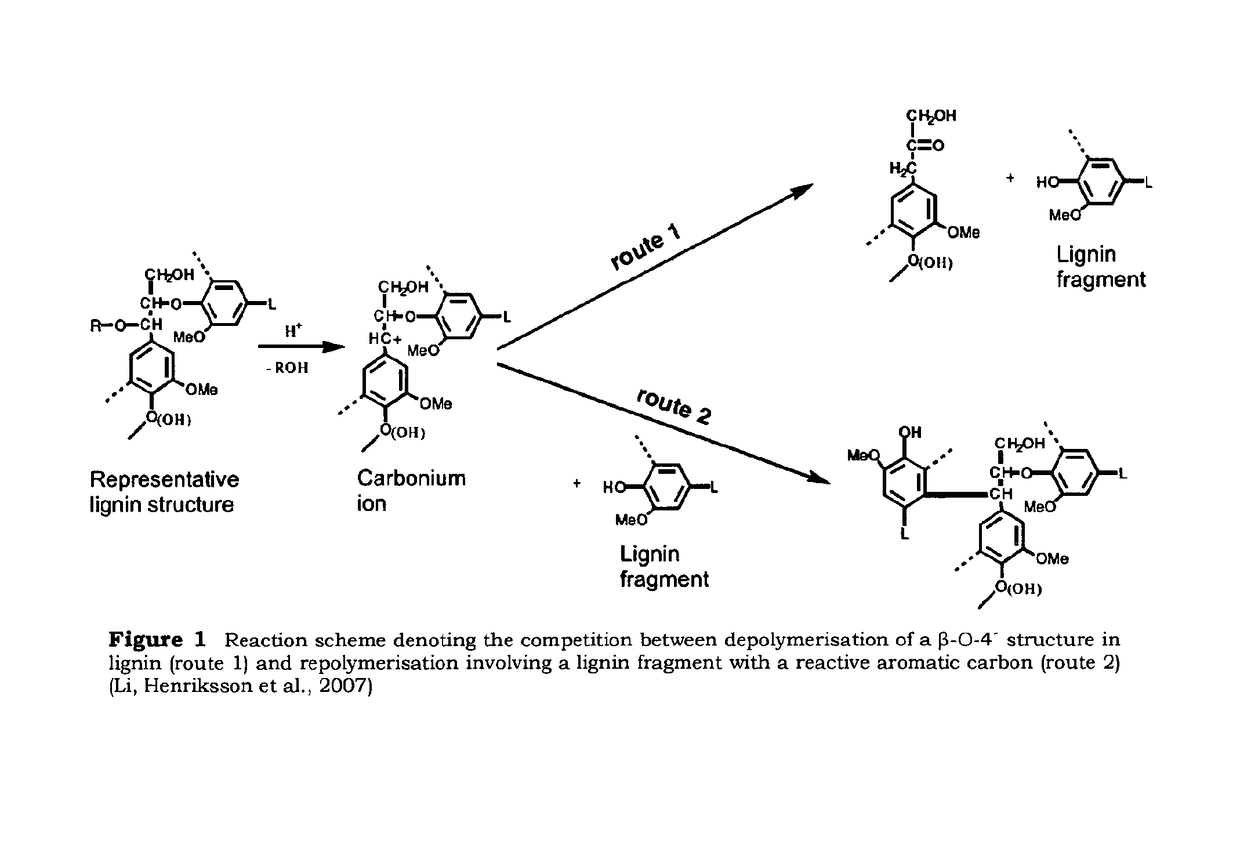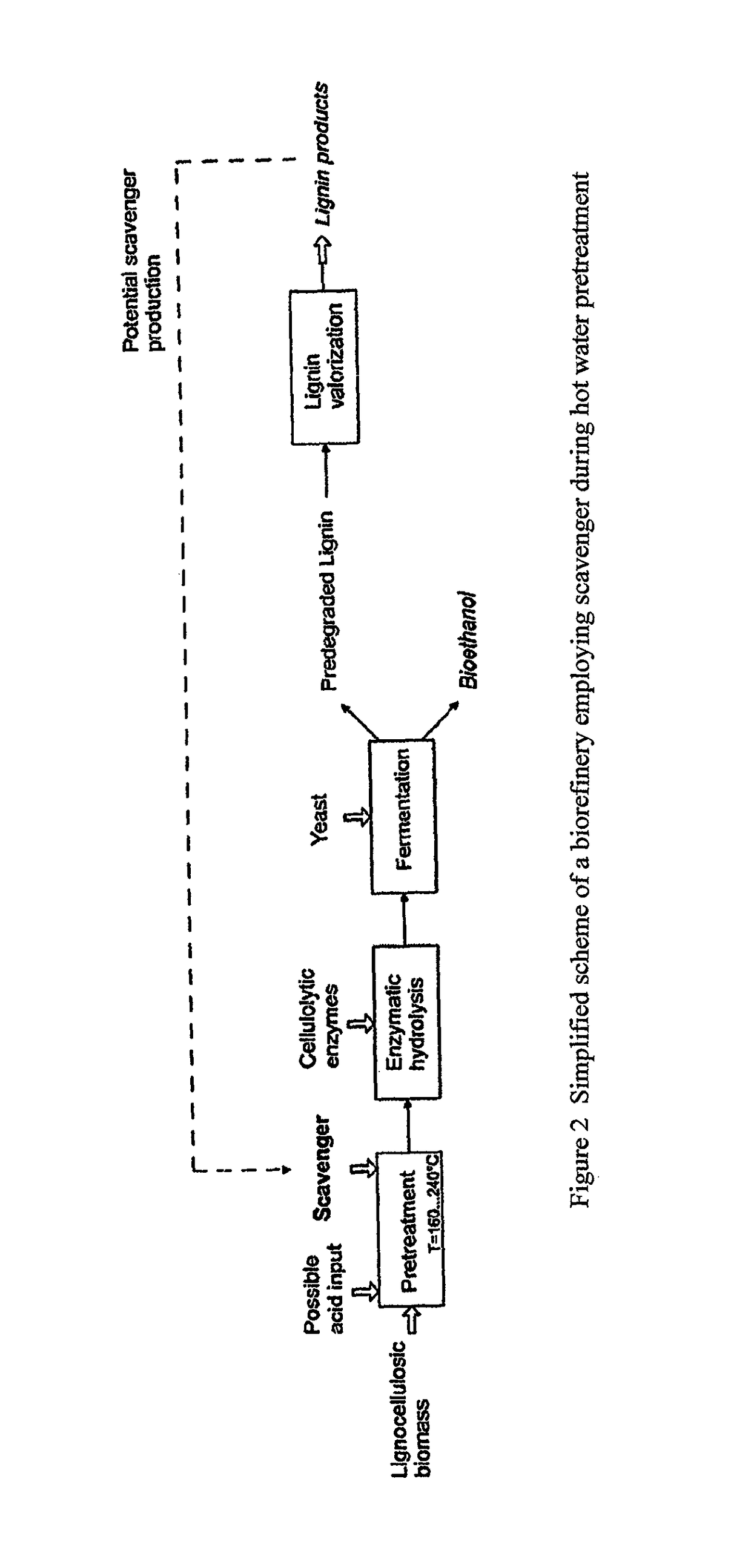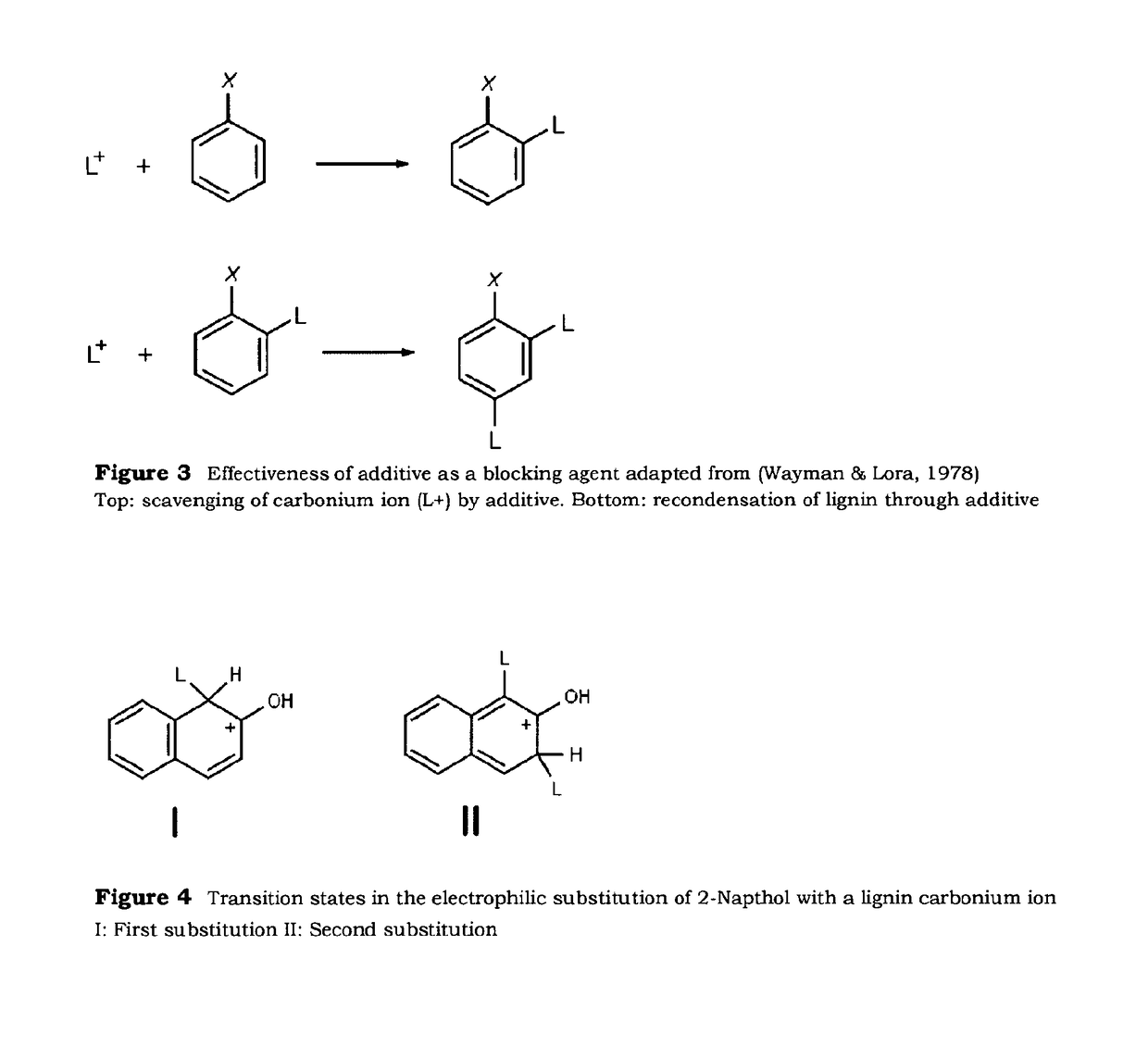Use of carbonium ion scavengers in the treatment of lignocellulosic biomass
a technology of carbonium ion scavenger and lignocellulosic biomass, which is applied in the direction of cellulose treatment using microorganisms/enzymes, pretreatment with water/steam, papermaking, etc., can solve the problems of lignin counter-productively adsorbing enzymes, enzymatic hydrolysis of cellulose as well as the subsequent fermentation to ethanol,
- Summary
- Abstract
- Description
- Claims
- Application Information
AI Technical Summary
Benefits of technology
Problems solved by technology
Method used
Image
Examples
working examples
3. WORKING EXAMPLES
[0055]In the following, the presented invention will be explained with the help of representative experiments. In particular, the effectiveness of carbonium ion scavengers in hot water treatment for an improved digestibility of the resulting cellulose is demonstrated. Compared to a state of the art hot water treatment, the digestibility of the cellulose can be improved.
Experimental
[0056]Sawdust from excoriated spruce, grown in Solothurn, Switzerland, with a dry matter content of 73.11±0.49% was used as feedstock. The biomass was knife-milled to a particle size <1 mm (Retsch Cutting Mill SM 200) and then sieved to a particle size between 0.18 and 1 mm.
[0057]Hot water treatments were conducted in a 100 ml stirred batch reactor (Compact Micro Reactor 5500, Parr Instrument Company, Illinois, USA) equipped with a blade impeller and a cooling finger. The experiments were performed with 2.5 g of spruce in 39.2 g H2O, corresponding to a biomass loading of 6% w / w. Optional...
PUM
| Property | Measurement | Unit |
|---|---|---|
| temperature | aaaaa | aaaaa |
| temperature | aaaaa | aaaaa |
| temperature | aaaaa | aaaaa |
Abstract
Description
Claims
Application Information
 Login to View More
Login to View More - R&D
- Intellectual Property
- Life Sciences
- Materials
- Tech Scout
- Unparalleled Data Quality
- Higher Quality Content
- 60% Fewer Hallucinations
Browse by: Latest US Patents, China's latest patents, Technical Efficacy Thesaurus, Application Domain, Technology Topic, Popular Technical Reports.
© 2025 PatSnap. All rights reserved.Legal|Privacy policy|Modern Slavery Act Transparency Statement|Sitemap|About US| Contact US: help@patsnap.com



